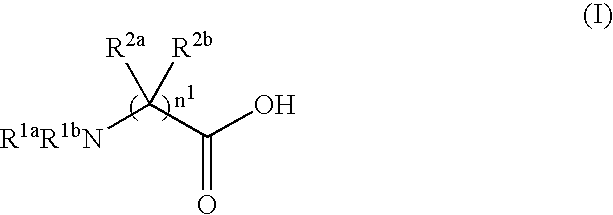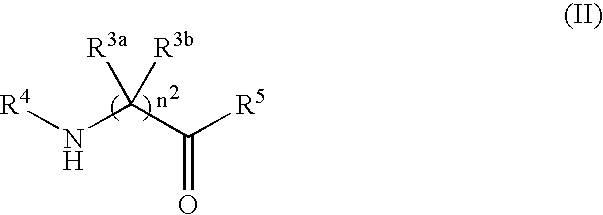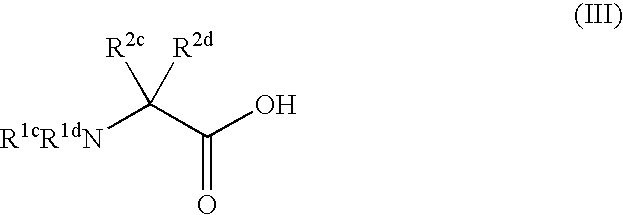Process for producing dipeptides or dipeptide derivatives
a technology of dipeptides and dipeptides, which is applied in the direction of peptide/protein ingredients, peptide sources, transferases, etc., can solve the problems of reducing the efficiency of peptide-forming reactions, and preventing peptidolytic defects, so as to achieve efficient production
- Summary
- Abstract
- Description
- Claims
- Application Information
AI Technical Summary
Benefits of technology
Problems solved by technology
Method used
Image
Examples
experimental example 1
Search for a Protein Having the Dipeptide-Synthesizing Activity Utilizing a Database
[0373] By using, as a query, the amino acid sequence of D-Ala-D-Ala ligase gene derived from Bacillus subtilis 168 [Nature, 390, 249-256 (1997)], a search for a gene encoding a protein having homology which is present in the genomic DNA sequences of Bacillus subtilis 168 was carried out using the homology search function of Subtilist (http: / / genolist.pasteur.fr / SubtiList / ) which is a database of the genomic DNA of Bacillus subtilis 168.
[0374] From the sequences obtained as a result of the search, genes encoding the amino acid sequences shown in SEQ ID NOS: 43, 44 and 45 which are D-Ala-D-Ala ligase motifs [Biochemistry, 30, 1673 (1991)] and encoding proteins whose function had already been clarified were excluded. Of the remaining sequences, the sequence showing the highest homology (29.1%) to the D-Ala-D-Ala ligase motif was selected as a gene of unknown function ywfE.
[0375] The nucleotide sequen...
experimental example 2
Construction of a Strain Expressing ywfE Gene
[0376] On the basis of the information on the nucleotide sequence obtained in Experimental Example 1, a ywfE gene fragment of Bacillus subtilis was obtained in the following manner.
[0377] That is, Bacillus subtilis 168 (ATCC 23857) was inoculated into LB medium [10 g / l Bacto-tryptone (Difco), 5 g / l yeast extract (Difco) and 5 g / l sodium chloride] and subjected to static culture overnight at 30° C. After the culturing, the chromosomal DNA of the microorganism was isolated and purified according to the method using saturated phenol described in Current Protocols in Molecular Biology.
[0378] By using a DNA synthesizer (Model 8905, PerSeptive Biosystems, Inc.), DNAs having the nucleotide sequences shown in SEQ ID NOS: 29 to 32 (hereinafter referred to as primer A, primer B, primer C and primer D, respectively) were synthesized. Primer A has a sequence wherein a nucleotide sequence containing the XhoI recognition sequence is added to the 5′ ...
experimental example 3
Production of a Dipeptide
[0386]Escherichia coli NM522 carrying pPE43 (Escherichia coli NM522 / pPE43) obtained in Experimental Example 2 was inoculated into 8 ml of LB medium containing 50 μg / ml ampicillin in a test tube, and cultured at 28° C. for 17 hours. The resulting culture was centrifuged to obtain wet cells.
[0387] A reaction mixture (0.1 ml) comprising 60 mg / ml (final concentration) wet cells, 120 mmol / l potassium phosphate buffer (pH 7.4), 60 mmol / l magnesium chloride, 60 mmol / l ATP, 30 mmol / l L-Ala, 30 mmol / l L-Gln and 0.4% Nymeen S-215 was prepared, and reaction was carried out at 37° C. for 3 minutes.
[0388] After the completion of reaction, the reaction product was derivatized by the dinitrophenol method and then analyzed by HPLC. The HPLC analysis was carried out using, as a separation column, Lichrosorb-RP-18 column (Kanto Kagaku) and, as an eluent, 1% (v / v) phosphoric acid and 25% (v / v) acetonitrile at a flow rate of 0.7 ml / min. As a result, it was confirmed that 120...
PUM
| Property | Measurement | Unit |
|---|---|---|
| temperature | aaaaa | aaaaa |
| pH | aaaaa | aaaaa |
| pH | aaaaa | aaaaa |
Abstract
Description
Claims
Application Information
 Login to View More
Login to View More - R&D
- Intellectual Property
- Life Sciences
- Materials
- Tech Scout
- Unparalleled Data Quality
- Higher Quality Content
- 60% Fewer Hallucinations
Browse by: Latest US Patents, China's latest patents, Technical Efficacy Thesaurus, Application Domain, Technology Topic, Popular Technical Reports.
© 2025 PatSnap. All rights reserved.Legal|Privacy policy|Modern Slavery Act Transparency Statement|Sitemap|About US| Contact US: help@patsnap.com



